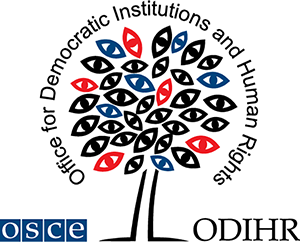About the EStAR Digital Diagnostic Tool
The EStAR Digital Diagnostic Tool is designed to assess shortcomings and strengths in the national hate crime victim support structures and services. It allows hate crime victim support practitioners, officials, and policy makers, to identify areas in their national systems that require improvement to better equip professionals so they are able to enhance protection and support for victims of hate crime.
Who can use the EStAR Digital Diagnostic Tool?
The EStAR Diagnostic Tool can be used by individual practitioners to complete their own self-assessment of their hate crime victim support system or for a more comprehensive diagnostic process, a group assessment function is available. A host would register to create a link which could then be shared with participants.
For group assessments, it is recommended to include a cross-section of representatives from the criminal justice system, government units responsible for the organization of victim support, police agencies and professionals as well as government, civil society and community-based organizations, which directly provide services – both general and specialist – to victims.
The Diagnostic Tool is a practical methodology to assess shortcomings and strengths in national hate crime victim support systems. The Tool guides an assessment along a matrix of areas and essential elements that need to be in place for effective hate crime victim support. The effectiveness of a hate crime victim support system depends on laws, policies and practice in the six specific areas that make up the critical building blocks of a robust hate crime victim support structure:
BLOCK 1: Legal and policy frameworks, hate crime crimes victims’ status
BLOCK 2: Hate crime victim support system and structures
BLOCK 3: Specialist support services for hate crime victims
BLOCK 4: Assessing hate crime victims’ needs and referrals
BLOCK 5: Sensitive and respectful treatment of hate crime victims
BLOCK 6: Hate crime victims in criminal proceedings and the justice system.
The diagnostic process offers a set of questions designed to reveal the existence of each of the various elements and the overall effectiveness of each block.
The Diagnostic Tool should be used as part of a broader methodology to achieve the best results. This includes the completion of a group assessment combined with an in-country guided diagnostic workshop gathering the participants to discuss the results. Such an analysis allows for joint identification of priority areas of response, and thus an elaboration of action plans for the improvement of hate crime victim support systems.
Conduct an individual assessment of your country’s hate crime victim support system.
Conduct a group assessment of your country’s hate crime victim support system.
ContinueThis tool was funded by the European Union’s Rights, Equality and Citizenship Programme (2014-2020).
The content of this tool represents the views of the author only and is his/her sole responsibility.
The European Commission does not accept any responsibility for use that may be made of the information it contains.
Project funded by
the European Union

Implemented by

